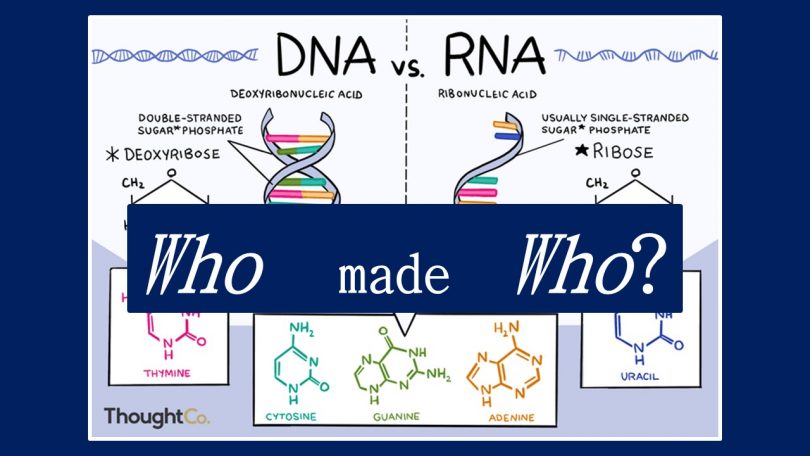Thomas Cech in the 1980’s found RNA had some modest catalytic abilities. Therefore, those seeking answers to the origin of life reasoned that perhaps RNA could act as a template for life. RNA could potentially catalyze its own replication. Therefore, science eagerly embraced the idea called The RNA World Hypothesis which proposes that life arose not from proteins as earlier proposed, but by the catalytic properties of RNA. The problem that arose was the components could be synthesized (through highly specialized processes) in the lab but during undirected natural reactions the process was chemically incompatible or simply: would never occur and RNA was a prebiotic chemists’ nightmare.1

“Unfortunately, the optimism surrounding the RNA world ignores known chemistry.”
“While a chemist can make nucleotides in a laboratory by synthesizing the components separately, purifying them, and then recombining the components to react to each other… during undirected chemical reactions overwhelmingly produce undesirable products and shapeless goop in the bottom of test tubes.”
Dr. Behe Lehigh University “Darwin’s Black Box (page 171).
Research has caused Gerald Joyce and Leslie Orgel, two scientists who have worked long and hard on the origin of life “problem”, declare “RNA is the prebiotic chemist’s nightmare.”
Joyce, G. F. and Orgel L. E. (1993) “Prospects for Understanding the Origin of the RNA World” Cold Springs Press (page 19)

Further explaining the RNA World Hypothesis problems Joyce and Orgel conclude: “Scientists interested in the origins of life seem to divide neatly into two classes. The first, usually …molecular biologists, believe that RNA must have been the first replicating molecule and chemists are exaggerating the difficulties of nucleotide synthesis. The second group of scientists are much more pessimistic. They believe that the (origin) of nucleotides on primitive earth would have been a near miracle.”
Joyce, G. F. and Orgel L. E. (1993) “Prospects for Understanding the Origin of the RNA World” Cold Springs Press (page 19)
1 Joyce, G. F. and Orgel L. E. (1993) “Prospects for Understanding the Origin of the RNA World” Cold Springs Press


